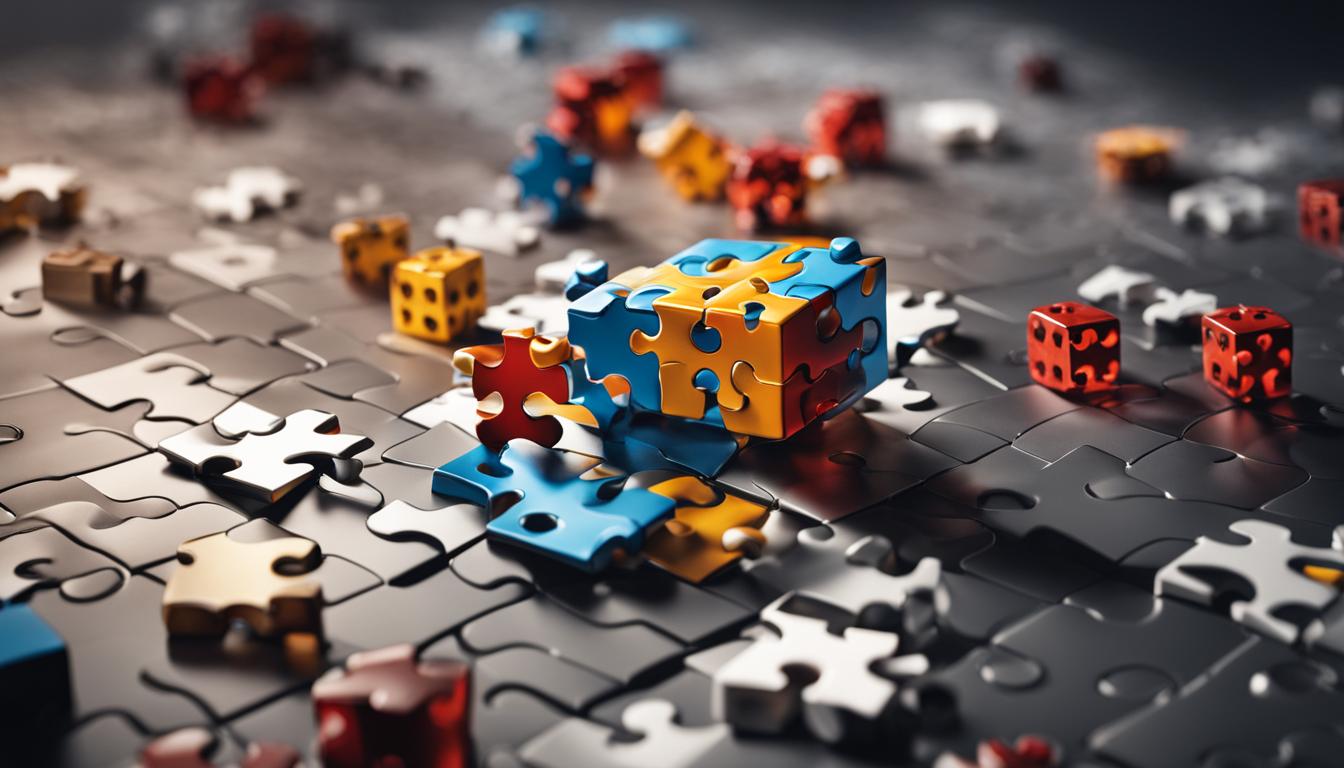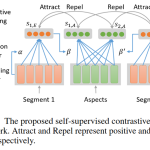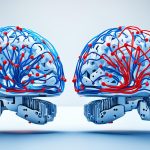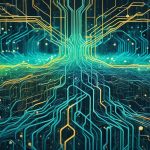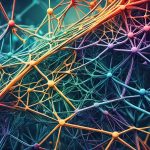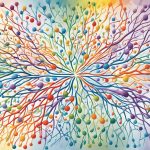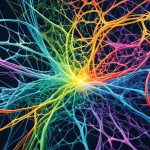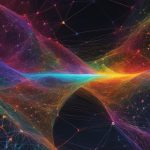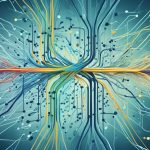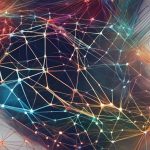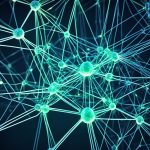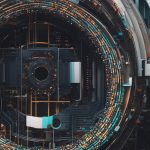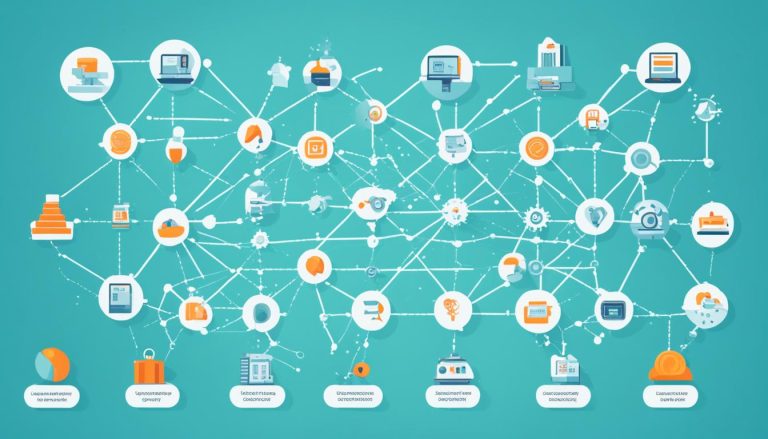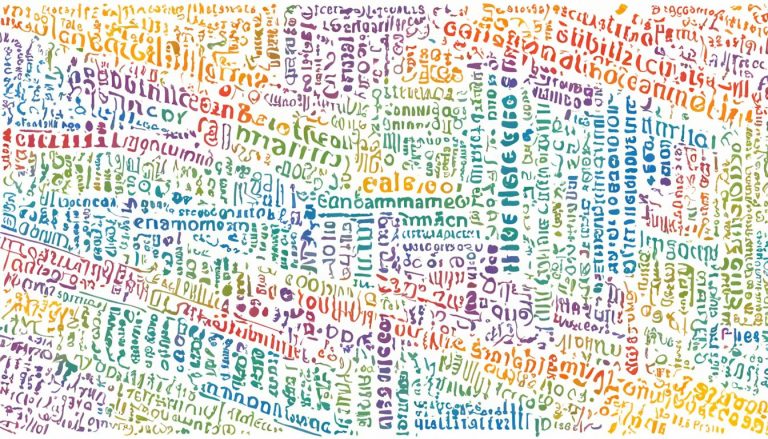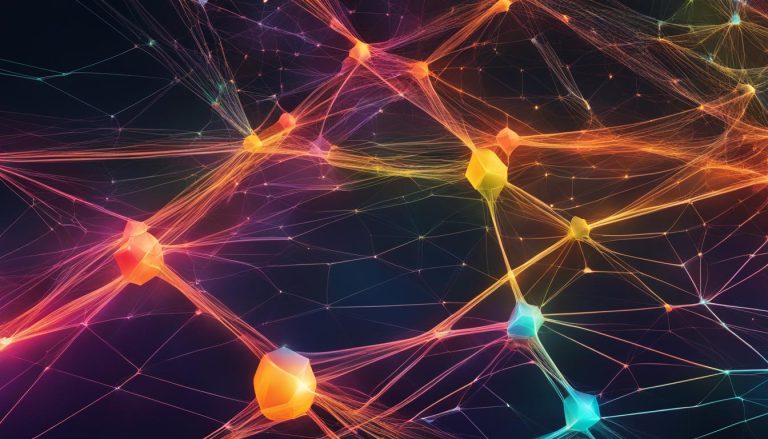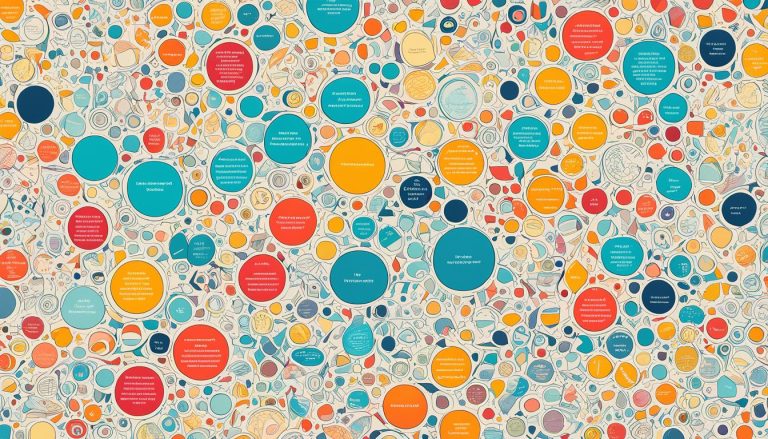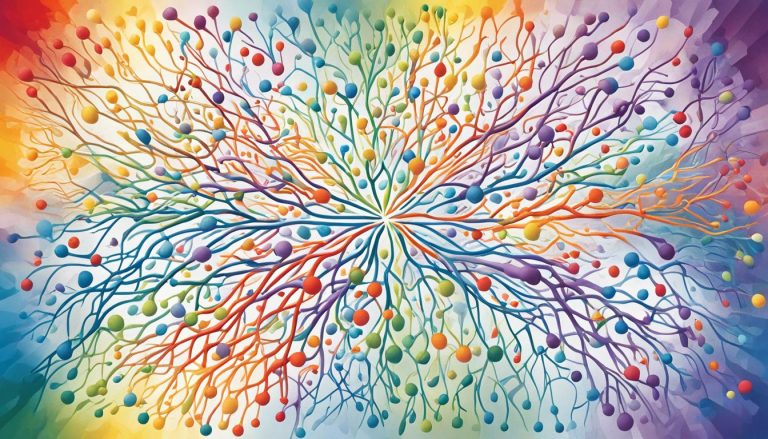Welcome to an exploration of the fascinating world of zero-shot learning in neural networks. As artificial intelligence (AI) continues to advance, zero-shot learning has emerged as a challenging problem in the field. This intriguing approach allows models to predict the class of samples from classes they have never encountered during training. By associating observed and non-observed classes through auxiliary information, such as textual descriptions, zero-shot learning pushes the boundaries of neural networks.
Zero-shot learning finds applications in numerous domains, including computer vision, natural language processing, and machine perception. Despite its potential, the true challenge lies in accurately recognizing and generalizing to unseen classes, without any training samples. As neural networks learn from a limited set of known classes, the ability to classify and generate content without prior training on specific classes opens up new avenues for AI advancements.
Join us on this journey as we delve into the background and history of zero-shot learning, examine the prerequisites for zero-shot classes, explore the concept of generalized zero-shot learning, discuss its applications across various domains, analyze the challenges it poses, and determine its potential for future advancements in the field of neural networks. As we unravel the intricacies of zero-shot learning, we hope to inspire and enlighten AI enthusiasts and researchers alike.
Background and History of Zero-shot Learning
Zero-shot learning, formerly known as dataless classification and zero-data learning, is an innovative concept that emerged in 2008 in the fields of natural language processing and computer vision. Since then, this approach has gained significant attention and popularity due to its ability to tackle the challenging problem of predicting classes that have never been seen during training.
In computer vision, zero-shot learning involves models learning parameters for known, or “seen,” classes and leveraging the concept of representational similarity to classify instances into new, or “unseen,” classes. By understanding the commonalities between classes in terms of shared features or attributes, models can make accurate predictions for novel classes.
In natural language processing, the focus is on comprehending textual labels and representing them within the same semantic space as the documents to be classified. This semantic representation enables the transfer of knowledge from known to unseen classes, facilitating accurate classification without prior exposure to the specific classes.
This combination of computer vision and natural language processing has paved the way for zero-shot learning to address the challenges of recognizing and generalizing to unseen classes, making it a crucial area of research in the field of artificial intelligence.
Key Points:
- Zero-shot learning originated in 2008 in the domains of natural language processing and computer vision.
- It was initially known as dataless classification and zero-data learning before the term zero-shot learning gained prominence.
- In computer vision, models learn parameters for seen classes and utilize representational similarity to classify instances into unseen classes.
- In natural language processing, the focus is on understanding labels and representing them in the same semantic space as the documents to be classified.
| Year | Field | Term |
|---|---|---|
| 2008 | Computer Vision | Dataless Classification/Zero-Data Learning |
| 2008 | Natural Language Processing | Dataless Classification/Zero-Data Learning |
| Present | Overall | Zero-Shot Learning |
Prerequisite Information for Zero-shot Classes
In the field of zero-shot learning, the ability to classify and generalize to unseen classes is a significant challenge. To overcome this, some form of auxiliary information is required for zero-shot classes. This can take various forms, including learning with attributes, learning from textual descriptions, or using class-class similarity.
Learning with attributes involves associating structured descriptions with classes to facilitate classification. For example, in bird descriptions, attributes like “red head” or “long beak” can be used to differentiate between different bird species. This approach leverages predefined characteristics to aid in classifying unseen classes.
Textual descriptions offer another avenue for zero-shot learning, where definitions or natural language descriptions are used to describe classes. For instance, utilizing textual information from sources like Wikipedia can provide rich context and detailed insights into the characteristics of different classes, enabling accurate classification even for unseen classes.
Class-class similarity is another approach used in zero-shot learning. It involves embedding classes in a continuous space and predicting the nearest embedded class for a given sample. By representing classes in a continuous space, it becomes possible to identify similarities and classify samples into unseen classes based on their proximity to known classes.
“Learning with attributes, learning from textual descriptions, and class-class similarity are all essential components of zero-shot learning. These techniques provide the necessary auxiliary information for accurately classifying and generalizing to unseen classes in neural networks.”
Prerequisite Information for Zero-shot Classes – Summary:
Prerequisite information for zero-shot classes in neural networks can take different forms, including learning with attributes, learning from textual descriptions, and utilizing class-class similarity. By leveraging structured descriptions, textual information, and continuous space embeddings, it becomes possible to classify and generalize to unseen classes. These techniques play a crucial role in enabling zero-shot learning and expanding the capabilities of neural networks.
Prerequisite Information for Zero-shot Classes – Summary Table:
| Prerequisite Information | Description |
|---|---|
| Learning with Attributes | Using structured descriptions to differentiate between classes. |
| Learning from Textual Descriptions | Utilizing textual information to provide detailed insights into classes. |
| Class-Class Similarity | Embedding classes in a continuous space and predicting nearest embedded class for classification. |
Generalized Zero-shot Learning
Generalized zero-shot learning takes the conventional zero-shot learning setup one step further by incorporating samples from both new and known classes during testing. This introduces a new challenge of differentiating between these two types of classes. To address this challenge, researchers have proposed various approaches, including the use of a gating module and a generative module.
The gating module plays a crucial role in determining the class origin of a given sample. It acts as a classifier that decides whether a sample belongs to a known or a new class. By assigning probabilities to different class labels, the gating module enables a more accurate classification process.
On the other hand, the generative module is responsible for generating feature representations of unseen classes. This module helps to bridge the gap between the known and new classes by synthesizing representations that capture the characteristics of the unseen classes. These generated representations are then used to train a standard classifier, enhancing the overall performance of the model in the generalized zero-shot learning scenario.
By incorporating the gating module and the generative module, researchers have made significant progress in addressing the challenges of generalized zero-shot learning. These advancements have paved the way for more accurate and robust classification models capable of handling both known and new classes in real-world applications.
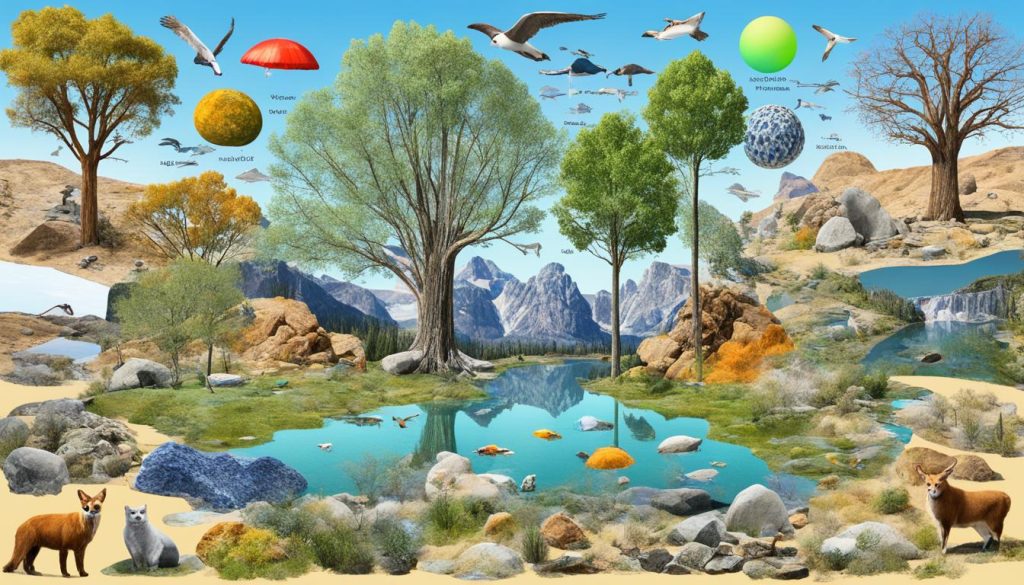
As shown in the diagram above, the gating module and the generative module are integrated into the overall architecture of the model, enabling it to distinguish between known and new classes and generate representations for unseen classes.
Example Implementation
“We implemented a generalized zero-shot learning model using a combination of a gating module and a generative module. The gating module, based on a deep neural network, takes the feature representation of a sample as input and outputs the probabilities of the sample belonging to each class. The generative module, also a deep neural network, synthesizes feature representations for unseen classes based on textual descriptions or attributes. These synthesized representations are then used to train a standard classifier. Our experiments showed that this approach significantly improved the classification performance in the generalized zero-shot learning scenario.”
| Advantages | Challenges |
|---|---|
|
|
The table above summarizes the advantages and challenges of utilizing a generalized zero-shot learning approach. While it offers accurate classification and improved generalization, the implementation complexity and computational requirements need to be considered. Additionally, the availability and quality of auxiliary information, such as textual descriptions or attributes, can also impact the effectiveness of the model.
Domains of Application for Zero-shot Learning
Zero-shot learning has found applications in a wide range of domains, showcasing its potential in various fields. Let’s explore some of the key domains where zero-shot learning techniques have been successfully applied:
1. Image Classification
Zero-shot learning has revolutionized image classification by allowing models to classify images into categories that were not seen during training. By leveraging semantic information, such as textual descriptions or attributes associated with classes, models can effectively generalize to unseen classes and accurately classify images. This has opened up new possibilities for image recognition in domains where new classes continually emerge and need to be identified.
2. Semantic Segmentation
Semantic segmentation is a crucial task in computer vision where the goal is to assign a category label to each pixel of an image. Zero-shot learning techniques have been applied to semantic segmentation tasks, enabling models to label pixels with class labels that were not part of the training data. This ability to segment objects into unseen classes has applications in domains such as autonomous driving, where novel objects and classes need to be recognized for safe navigation.
3. Object Detection
Zero-shot learning has also made significant contributions to object detection tasks, where the goal is to identify and locate objects of interest within an image. By leveraging auxiliary information or semantic embeddings, models can detect and classify objects belonging to unseen classes without explicit training on those classes. This capability is valuable in applications such as surveillance, where new objects and classes may need to be detected in real-time.
4. Natural Language Processing
Zero-shot learning has also found applications in natural language processing tasks, such as document classification and sentiment analysis. By incorporating semantic information about unseen classes, models can accurately classify documents or analyze sentiment even for classes that were not part of the training data. This enables intelligent systems to comprehend and process text across a wide range of topics and domains.
5. Computational Biology
In the field of computational biology, zero-shot learning has proven valuable in analyzing biological data and making predictions. By utilizing auxiliary information and semantic representations, models can classify biological samples into novel classes and predict various biological properties or behaviors. This has the potential to drive advancements in fields such as genomics, drug discovery, and personalized medicine.
These examples highlight the versatility and potential of zero-shot learning across different domains. By enabling classification, segmentation, detection, and analysis of unseen classes, zero-shot learning techniques pave the way for intelligent systems to adapt and make informed decisions in ever-evolving and complex environments.
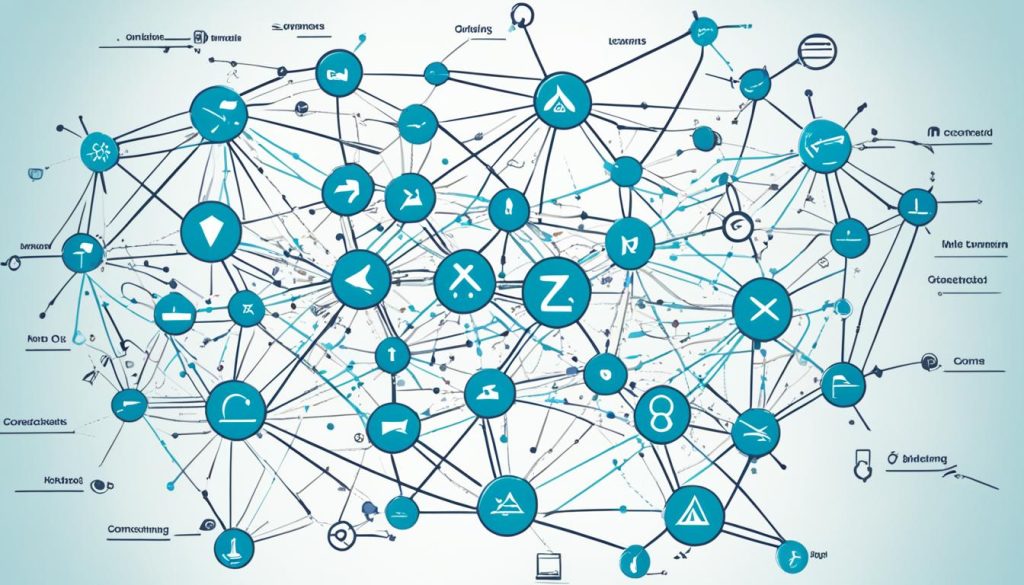
| Domain | Application |
|---|---|
| Image Classification | Recognizing and classifying images into unseen classes |
| Semantic Segmentation | Assigning category labels to each pixel of an image for unseen classes |
| Object Detection | Detecting and classifying objects belonging to unseen classes |
| Natural Language Processing | Classifying documents, analyzing sentiment, and processing text for unseen classes |
| Computational Biology | Analyzing biological data, predicting properties, and behaviors for novel classes |
Challenges of Zero-shot Learning
Zero-shot learning presents various challenges that impact its effectiveness and applicability. These challenges include open-set recognition, the semantic gap, and data heterogeneity.
Open-Set Recognition
One of the key challenges in zero-shot learning is open-set recognition. Traditional classification models are typically trained on a predefined set of classes and struggle to recognize instances from classes that were not present during training. In zero-shot learning, the model needs to identify and classify samples from unseen classes with no prior exposure. This requires the model to generalize its knowledge and make predictions based on limited information.
The Semantic Gap
Bridging the semantic gap between seen and unseen classes is crucial for accurate zero-shot learning. The semantic gap refers to the difference in understanding and representation between classes. To effectively generalize to new classes, the model needs to understand the semantic similarities and differences between known and unknown classes. By leveraging auxiliary information such as textual descriptions or class attributes, zero-shot learning aims to overcome this challenge and improve the model’s ability to recognize and classify unseen classes.
Data Heterogeneity
Data heterogeneity is another significant challenge in zero-shot learning. Novel classes that the model has not seen during training can significantly differ from the classes in the training set. This can lead to a mismatch in the feature distributions and make it difficult for the model to generalize. Addressing data heterogeneity requires techniques that can effectively handle variations and discrepancies between different classes, ensuring that the model can adapt and learn from diverse data sources.
To overcome these challenges, advancements in model architecture and data representation are essential. Researchers are exploring innovative approaches to bridge the semantic gap, improve open-set recognition, and handle data heterogeneity. These advancements will contribute to the development of more robust and accurate zero-shot learning models.
| Challenges of Zero-shot Learning | Description |
|---|---|
| Open-set recognition | Difficulty in identifying and classifying instances from unseen classes |
| The semantic gap | Difference in understanding and representation between known and unknown classes |
| Data heterogeneity | Differences between novel classes and the training dataset |
Conclusion
Zero-shot learning in neural networks presents a significant challenge in recognizing and generalizing to unseen classes. This approach has wide-ranging applications in various domains, including image classification, object detection, and natural language processing.
Despite the challenges, the potential of zero-shot learning is immense. Overcoming obstacles such as open-set recognition and bridging the semantic gap will further advance the field of zero-shot learning and contribute to AI advancements.
Continued research and development in zero-shot learning will unlock new possibilities, allowing intelligent systems to classify and generate content without prior training on specific classes. With its ability to handle unseen classes, zero-shot learning has the potential to revolutionize AI applications in diverse fields.
FAQ
What is zero-shot learning?
Zero-shot learning is a problem setup in deep learning where a model needs to predict the class of samples from classes it has never seen during training.
When was zero-shot learning first introduced?
Zero-shot learning was first introduced in 2008 in the fields of natural language processing and computer vision.
What is the focus of zero-shot learning in computer vision?
In computer vision, models learn parameters for seen classes and rely on representational similarity to classify instances into new classes.
What is the focus of zero-shot learning in natural language processing?
In natural language processing, the focus is on understanding labels and representing them in the same semantic space as the documents to be classified.
What kind of auxiliary information is required for zero-shot classes?
Some form of auxiliary information is required for zero-shot classes, such as pre-defined structured descriptions (attributes), textual descriptions, or embedding classes in a continuous space.
What is learning with attributes?
Learning with attributes involves using structured descriptions like “red head” and “long beak” for bird descriptions.
What are textual descriptions?
Textual descriptions can include definitions or free-text natural language descriptions, such as Wikipedia entries.
How does class-class similarity work in zero-shot learning?
Class-class similarity relies on embedding classes in a continuous space and predicting the nearest embedded class for a given sample.
How does generalized zero-shot learning differ from zero-shot learning?
Generalized zero-shot learning extends the zero-shot learning setup to include samples from both new and known classes at test time.
How can the challenge of distinguishing between new and known classes be addressed in generalized zero-shot learning?
Approaches to handle this include using a gating module to decide the class origin of a sample and a generative module to generate feature representations of unseen classes for training a standard classifier.
What are the domains of application for zero-shot learning?
Zero-shot learning has been successfully applied to various domains, including image classification, semantic segmentation, image generation, object detection, natural language processing, and computational biology.
What are the challenges of zero-shot learning?
The challenges of zero-shot learning include open-set recognition, bridging the semantic gap between seen and unseen classes, and data heterogeneity.
How can zero-shot learning impact AI advancements?
Zero-shot learning has the potential to unlock new possibilities in AI advancements by enabling classification and generation of content without prior training on specific classes.

